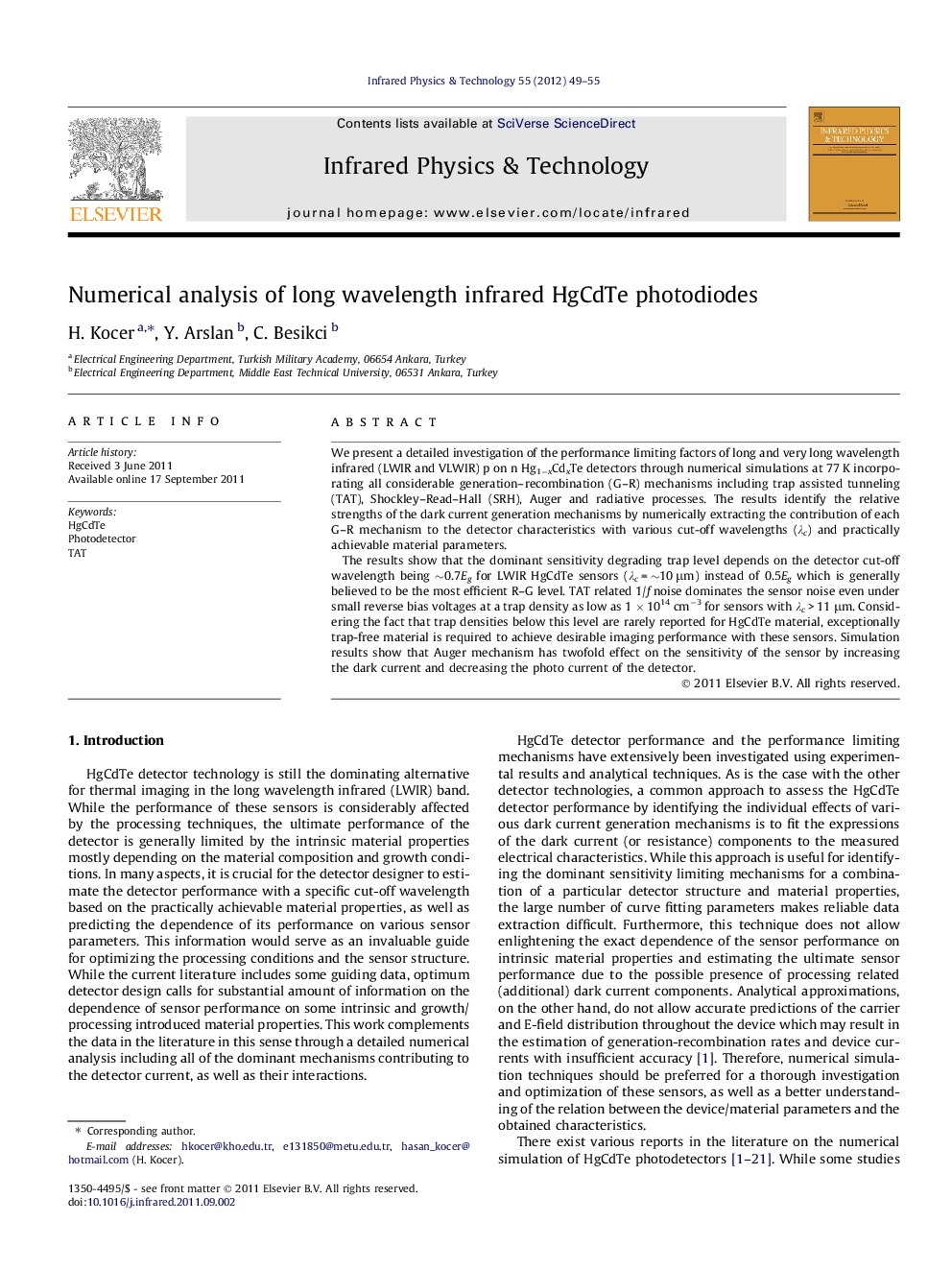| کد مقاله | کد نشریه | سال انتشار | مقاله انگلیسی | نسخه تمام متن |
|---|---|---|---|---|
| 1784488 | 1023262 | 2012 | 7 صفحه PDF | دانلود رایگان |

We present a detailed investigation of the performance limiting factors of long and very long wavelength infrared (LWIR and VLWIR) p on n Hg1−xCdxTe detectors through numerical simulations at 77 K incorporating all considerable generation–recombination (G–R) mechanisms including trap assisted tunneling (TAT), Shockley–Read–Hall (SRH), Auger and radiative processes. The results identify the relative strengths of the dark current generation mechanisms by numerically extracting the contribution of each G–R mechanism to the detector characteristics with various cut-off wavelengths (λc) and practically achievable material parameters.The results show that the dominant sensitivity degrading trap level depends on the detector cut-off wavelength being ∼0.7Eg for LWIR HgCdTe sensors (λc = ∼10 μm) instead of 0.5Eg which is generally believed to be the most efficient R–G level. TAT related 1/f noise dominates the sensor noise even under small reverse bias voltages at a trap density as low as 1 × 1014 cm−3 for sensors with λc > 11 μm. Considering the fact that trap densities below this level are rarely reported for HgCdTe material, exceptionally trap-free material is required to achieve desirable imaging performance with these sensors. Simulation results show that Auger mechanism has twofold effect on the sensitivity of the sensor by increasing the dark current and decreasing the photo current of the detector.
► LWIR p on n HgCdTe detectors are simulated at 77 K.
► All considerable R–G mechanisms including TAT are incorporated.
► Dominant trap level is found to be 0.7Eg for a 10 μm cut-off sensor.
► The TAT related 1/f noise dominates at a trap density as low as 1 × 1014 cm−3.
► Auger suppression decreases the dark current and increases the photocurrent.
Journal: Infrared Physics & Technology - Volume 55, Issue 1, January 2012, Pages 49–55